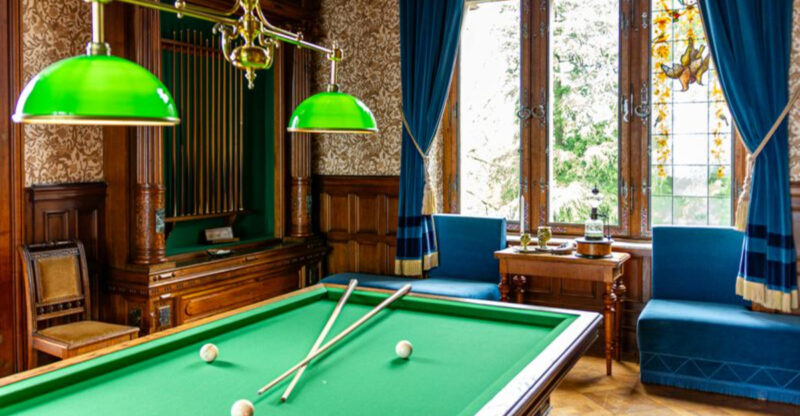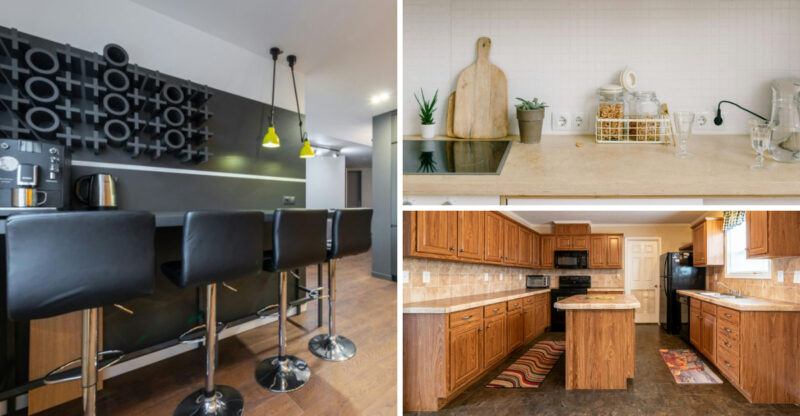12 Smart Decluttering Tips For Maximalists Who Still Love Their Stuff

Love your collections but feeling overwhelmed by clutter? You’re not alone! Many of us adore our treasures but struggle with keeping our spaces functional and beautiful.
The good news is that being a maximalist doesn’t mean living in chaos.
These practical tips will help you organize your beloved items while still honoring your love of abundance and personal expression.
1. Group Items by Theme or Color

Creating visual harmony doesn’t require minimalism! When you arrange similar items together, the eye perceives them as one unit rather than scattered objects. Try organizing books by color for a rainbow effect, or group vintage cameras on one shelf and travel souvenirs on another.
This technique transforms what might look like random clutter into intentional collections that tell your story. Plus, themed groupings make dusting and maintenance simpler since you’re handling categories at once.
My favorite twist? Rotate which collections take center stage seasonally, keeping some treasures in decorative boxes until their turn comes. This strategy satisfies both your desire to keep everything and your need for visual calm.
2. Rotate Decor Seasonally
Seasonal rotation might be your secret weapon! Instead of displaying everything at once, create a cycle for your treasures. Summer might showcase your shell collection and beach paintings, while winter brings out cozy throws and holiday memorabilia.
When items take turns in the spotlight, each piece receives more appreciation and breathing room. Label storage containers clearly so you can find specific items when inspiration strikes. Consider taking photos of your favorite arrangements to recreate them next year.
This approach satisfies your collector’s heart without overwhelming your space. I’ve found it creates a delightful anticipation unpacking beloved items feels like reuniting with old friends, and your space stays fresh year-round.
3. Use Hidden Storage Furniture
Furniture that pulls double-duty as storage can revolutionize your maximalist space! Ottoman with removable tops, beds with drawers underneath, and coffee tables with compartments keep treasures accessible but not visible all at once.
Hidden storage allows you to maintain your collections while creating visual breaks that prevent sensory overload. Look for vintage trunks that serve as side tables or hollow benches for entryways. Even wall art can hide storage try mounting shallow cabinets with decorative doors.
I’ve transformed my living room with a sectional featuring storage under every seat. Now my craft supplies, extra throw pillows, and holiday decorations stay close at hand without creating visual clutter. The space feels both abundant and intentional.
4. Curate Collections (Keep Best, Store Rest)
Curating doesn’t mean abandoning your treasures! Select your absolute favorites from each collection for display, while keeping others in attractive storage nearby. This approach highlights your most meaningful pieces while maintaining access to everything you love.
Did you know museums typically display only 5% of their collections at any time? Apply this principle at home by choosing representative pieces that tell your story. For example, showcase your five most striking vintage cameras rather than all twenty.
Rotation prevents dust accumulation and keeps displays fresh. I store my overflow items in clear bins or photo boxes, organizing them by category with quick inventory lists taped inside the lids. This system gives me the joy of abundance without the visual noise.
5. Display in Odd-Number Groupings

Arranging objects in groups of three or five creates visual interest while taming chaos! This styling trick makes even eclectic collections look intentional rather than scattered. The human eye naturally finds odd-numbered groupings more appealing and dynamic than even-numbered ones.
Try clustering items of varying heights, with the tallest piece at the back. Mix textures and materials while maintaining a common element perhaps color or theme to unify the grouping. Leave breathing room between clusters to give the eye resting spots.
If you’re struggling with arrangement, triangular formations often work beautifully. Start with three items: place the tallest at the back, medium-height to one side, and shortest in front. This simple formula transforms random objects into artful vignettes while honoring your maximalist spirit.
6. Edit Shelves with Negative Space
Empty space isn’t wasted space it’s breathing room for your treasures! When editing shelves, resist the urge to fill every inch. Instead, leave strategic gaps between collections or solo statement pieces to create visual punctuation.
This approach doesn’t mean embracing minimalism. Rather, it’s about highlighting your favorite things through contrast. Think of negative space as the frame around a painting – it defines and elevates what’s inside it.
Try removing 20% of items from an overcrowded shelf and rearranging what remains. You’ll be amazed how much more you notice and appreciate each piece! I’ve found this technique particularly effective with bookshelves, where alternating dense book sections with curated vignettes creates rhythm and interest while maintaining my maximalist joy.
7. Choose Multi-Purpose Furniture

Smart furniture choices can double your display and storage options! Look for pieces that serve multiple functions – a secretary desk with cubbies, a bookcase with a built-in writing surface, or a kitchen island with open shelving underneath.
Multi-purpose furniture maximizes every square foot without sacrificing your style. Consider wall-mounted drop-leaf tables that fold away when not needed or nesting tables that can be separated for parties. Extendable dining tables with storage drawers offer flexibility for both everyday use and entertaining.
My game-changing purchase was a daybed with trundle storage underneath. It serves as seating, guest sleeping space, and hidden storage for seasonal decor. When choosing new furniture, always ask: “How many functions can this serve?” The answer should be at least two!
8. Keep Flat Surfaces Partially Clear
Maintaining some open space on tables and counters creates visual relief in a treasure-filled home! While complete emptiness feels sterile to a maximalist, completely covered surfaces create stress and limit functionality.
Aim to keep about 40% of each horizontal surface clear. This balance allows you to appreciate your collections while maintaining usable space for daily activities. For kitchen counters, create a “working zone” that stays relatively clear, while allowing other areas to showcase your vintage canisters or colorful appliances.
If you’re struggling with tabletops, try the tray technique corral smaller items on decorative trays that can be moved as a unit when you need the space. I’ve found this approach particularly helpful on coffee tables, where we need room for drinks and snacks alongside my beloved art books.
9. Use Trays to Contain Visual Clutter

Trays are magical clutter-tamers that preserve your maximalist style! Grouping small objects on a beautiful tray instantly transforms scattered items into an intentional collection. The defined boundary creates order without sacrificing personality.
Try placing perfume bottles on a mirrored tray in the bathroom, or corralling remote controls in a wooden bowl on the coffee table. When items need temporary homes like mail or keys designated trays prevent them from spreading across surfaces.
Beyond organization, trays add style through contrast. A sleek lacquered tray under vintage figurines creates sophisticated tension between old and new. I keep a collection of trays in different sizes and materials, swapping them seasonally to refresh my displays while maintaining the organizational benefits.
10. Limit Display Zones to a Few Areas
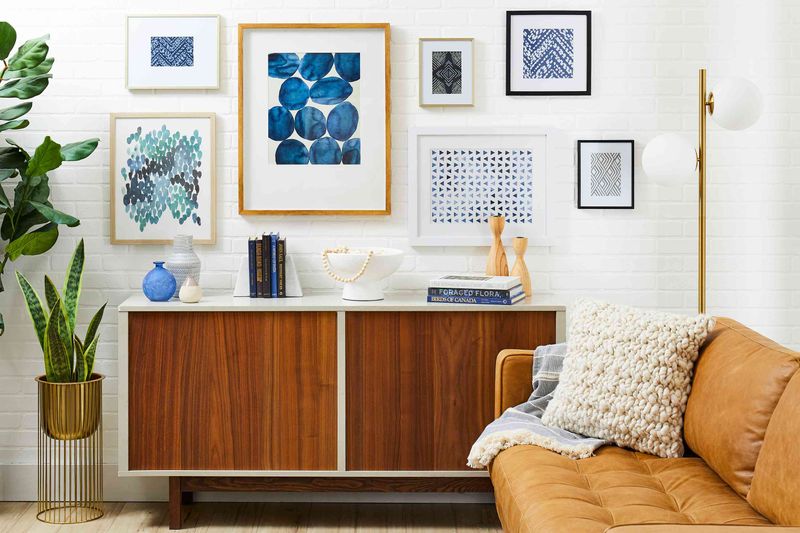
Strategic display zones create focal points that showcase your treasures without overwhelming your space! Instead of spreading collections throughout every room, designate specific areas for display – perhaps one statement wall, a single bookcase, or a dedicated cabinet of curiosities.
This approach creates visual rhythm, alternating between areas of richness and relative simplicity. Your eye needs these transitions to fully appreciate the beauty of your collections. Try concentrating your art on a gallery wall rather than spreading pieces throughout a room.
When I embraced this technique, I designated my entryway console as a rotating display zone while keeping my dining area more restrained. Visitors now notice and comment on my collections rather than feeling overwhelmed. Remember, limitation actually heightens impact like a spotlight that draws attention to what matters most.
11. Donate or Store Duplicates

Duplicate items often hide in plain sight, creating unnecessary bulk! Examine your collections for multiples – do you really need five black sweaters, three similar vases, or multiple copies of the same book? Keep your absolute favorite and consider releasing the others.
If parting with duplicates feels painful, try temporary storage first. Box lesser-used items for six months; if you don’t miss them, that’s your sign! For sentimental duplicates like inherited dish sets, keep representative pieces and photograph the rest before finding them new homes.
My breakthrough came with kitchen gadgets I had three vegetable peelers and two garlic presses taking up valuable drawer space! Now I follow the “best in class” rule: I keep only the highest quality version of each tool. This approach honors quality over quantity while still embracing abundance where it matters most.
12. Practice “One In, One Out” Rule
Maintaining equilibrium through mindful acquisition prevents overcrowding! The “one in, one out” principle doesn’t mean rejecting your maximalist tendencies it simply creates a sustainable framework for enjoying your collections without being buried by them.
When something new catches your eye, identify what existing item it might replace or upgrade. This pause creates intentionality around purchases and prevents accumulation on autopilot. The rule works especially well for categories with natural limits, like clothing, kitchenware, or decorative pillows.
I’ve modified this approach to fit my maximalist heart by creating “flow zones” areas where I strictly maintain the rule (bathroom cabinets, kitchen drawers) and “flex zones” where I allow more freedom (bookshelves, display cabinets). This balanced system keeps functional spaces working well while still indulging my love of beautiful abundance.

